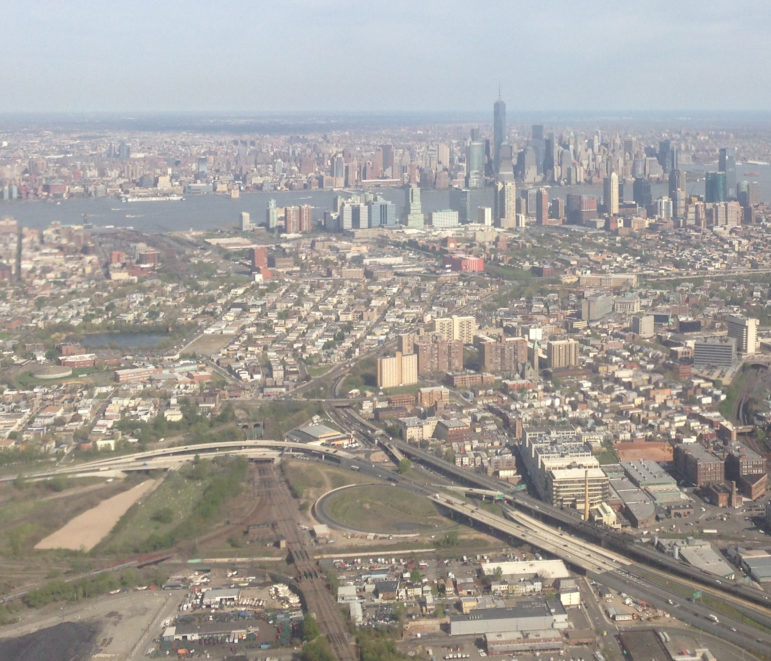
Famartin
'Although it can be difficult to think big, when New Yorkers provide input as a collective, we can bring about a better, more thoughtfully formed infrastructure system.'
While many bemoan the state of the MTA, debate the future of the BQE, and question the role that congestion pricing can play in our city’s future, few have considered what it would mean to take a high-level approach to tackling New York City’s infrastructure problems. Over the past four years, we, the American Society for Testing and Materials (ASTM), have worked to create an Infrastructure Management Standard—one that can comprehensively address the infrastructure issues plaguing our city. The keys to this standard, and the changes it could bring about, are threefold: big yet detailed thinking, a transparent and accountable process focused on the community, and a sustainable source of equitably distributed wealth.
To effectively handle the challenges we face, we need to first consider infrastructure at the highest level and understand how various malfunctioning systems are interconnected. We might say that infrastructure operates in clusters. The MTA is intertwined with NJ Transit and LIRR, the ferry system, and the private bus lines that service the greater metropolitan area. All of these services are dependent on the conditions of roads, bridges, highways, and miles of track.
Considering the issues from such a high level can be intimidating, but it can help save us from the crucial errors that come from thinking too small. Consider congestion pricing. While this will likely decrease the number of people driving from Westchester County into the city, many may respond by driving to a nearby commuter rail station to park and take the train. But are there enough parking lots to accommodate this? Will the trains be able to adequately serve this new influx of passengers? These are difficult questions, but asking them helps us not only to take a regional approach to urban infrastructure, but more effectively serve those who rely on transit every day.
Although it can be difficult to think big, when New Yorkers provide input as a collective, we can bring about a better, more thoughtfully formed infrastructure system. As the ultimate beneficiaries of such work, New Yorkers are also best-poised to address the failures of the systems they use every day. Comprehensively assessing our city’s infrastructure problems will both require and encourage buy-in from our fellow New Yorkers. Community engagement must be iterative and ongoing in order to establish a culture of transparency and accountability that builds trust.
Get the best of City Limits news in your inbox.
Select any of our free weekly newsletters and stay informed on the latest policy-focused, independent news.
The most effective model for such engagement, and for general infrastructure evaluation, would follow a four-step process. First, the municipal authority provides the community with a detailed and clustered assessment of its infrastructure. Next, an “engagement meeting” provides the opportunity to present financials for each system of infrastructure and for the community to weigh in on priorities—frequency of use, quality of service, and potential sources of funding. Based on this feedback, the municipal authority then revises their assessment to include forward-looking recommendations. The report and plans for the future are then shared with the community at a final engagement meeting.
This iterative and transparent process may seem idealistic, but it relies on an urgent truth: infrastructure is a public good. And land value—commonly-owned, socially-created wealth—can be tapped to keep this public good alive and well. Henry George, the 19th century political economist, was one of the first to understand this. The value of New York City doesn’t just live on Wall Street or on Broadway. The value of New York lives in the boroughs we occupy, in the places we live and work. When this land is improved, we all serve to benefit. But particularly those who are impacted most directly—people who can expect a new bus stop or live along the 2nd Ave Q. Rather than taxing New Yorkers (even those upstate) indiscriminately, we can frankly assess how improvements on the land improve our lives. This standard and process for infrastructure evaluation can help us to make long-overdue improvements a reality.
If we as a city can recognize how we stand to benefit, and our leaders can take seriously our input into the services that concretely impact our lives, we can bring about a more equitable, transparent, and effective infrastructure systems.
Marty Rowland is a trustee of the Henry George School of Social Science and a Senior Fellow at the Asset Leadership Network.









One thought on “Opinion: NYC Needs to Think Bigger—and Better—About Improving Infrastructure”
Note that once again STATEN ISLAND is not mentioned and not included. We should be where infrastructure work starts. No studies are needed. Give us more than signs that encourage us to use mass transit. Give us the mass transit that we subsidize for the rest of the city and suburbs through the tolls to use bridges that we require to commute from our island. We alone are larger than Pittsburgh,Buffalo,Cincinnati and other midsized cities with our services going elsewhere.